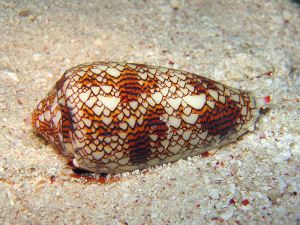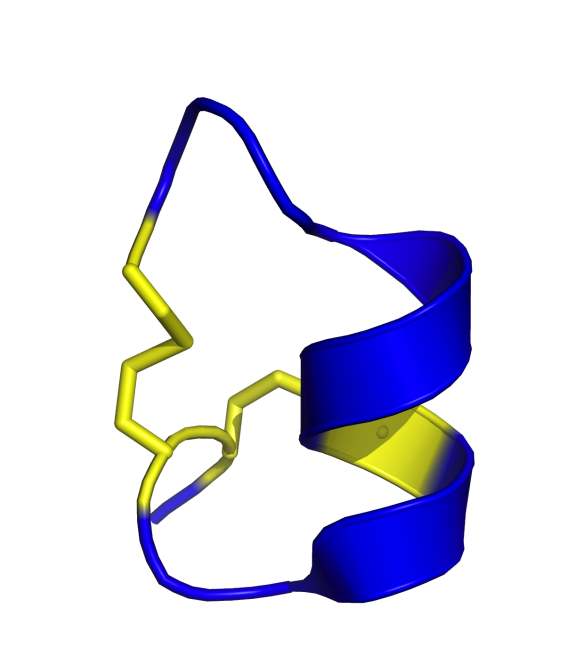Cone snail toxins as painkillers – The structure of an alpha-conopeptide
This post will discuss conotoxins as a source of painkillers, as we continue to celebrate National Pain Week in Australia.
What is it?

A Textile cone snail (Conus textile) taken at Cod Hole, Great Barrier Reef, Australia. Photographer: Richard Ling.
Cone snails (marine molluscs of the genus Conus) immobilise their prey by using a cocktail of peptides. These conopeptides or conotoxins from the venom of cone snails are active against receptors and ion channels. Conopeptides are over 100 times more potent than morphine, and they lack many of the side effects of current treatments. One conopeptide (x- MVIIA which is marketed as Prialt or ziconotide) is currently available for the treatment of chronic pain, although many more are in trials.
These drugs still need to be injected. However, researchers are aiming to develop these compounds into an orally active pill or tablet form.
Here we are looking at the structure of an alpha-conotoxin (PnIB) from Conus pennaceus. This toxin blocks the nicotinic acetylcholine receptor at nerve cells and muscles.
What does it look like?
Conpeptides such as PnIB are small peptides (10 to 30 amino acids) and have one or more disulfide bonds. The structure of PnIB has two disulfide bonds (yellow) that constrain and stabilize the small peptide. The structure is further stabilized by 21 intramolecular, 3 intermolecular, and 35 water-associated hydrogen bonds.

Image generated by Pymol (http://www.pymol.org/) using the coordinates from the Protein Data Bank (accession code: 1AKG).
Where did it come from?
The 1.1 Å resolution crystal structure of alpha-conotoxin PnIB was determined by researchers at the University of Queensland's Institute for Molecular Bioscience and published in Biochemistry in 1998.






